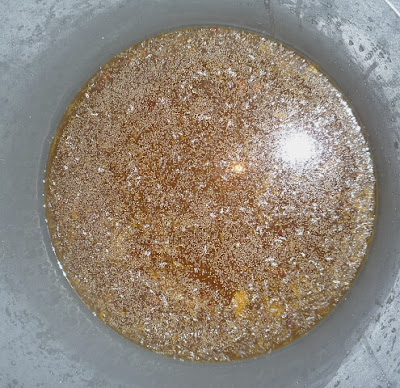| Once all the ingredients have been added, I'm ready to pitch my yeast. For wine, this is the most important part of all. Yeast is a fungus that basically converts sugar into alcohol and carbon dioxide. The more you pamper your yeast, the better the resulting wine. A good wine recipe is one that gives the yeast everything that it needs - sugar, oxygen, vitimins, some acid, nitrogenous matter, a little warmth and no competition from other yeasts and bacteria (which is why keeping everything sterile is crutial too). This picture shows the finished 'must' with the yeast sprinkled on the surface. I had to wait until the temperature had dropped to 21deg before doing this, because too warm a temperature can damage or even kill the yeast. |


















